Shamkir 2019 round 1: Navara makes a Houdini like escape against Vishy Anand
Usually when a super tournament begins we have a look at the results and when we see that all of the games have ended in draws, we feel that it might be a boring round. Nothing can be farther from the truth at the first round of the Shamkir Chess 2019. The 10 player tournament began with five draws in round one, but we saw a lot of fighting chess. The grandest one being Vishy Anand versus David Navara. Playing with the white pieces Anand outplayed his Czech opponent in fine style and built up a winning position. Just when it seemed like Vishy would take the full point, he made a huge mistake. Navara was agile, and pounced at the opportunity with both hands setting up a beautiful perpetual check. This game and the rest analyzed in great depth by our new author Tanmay Srinath.
Vugar Gashimov was certainly one of the most original and creative thinkers to ever play the game. His use of the Modern Benoni struck a chord in my heart, as I admired one of the few chess players gutsy enough to play such sharp stuff against the world’s best. It’s a real shame that brain tumour took him away before I could watch him more. To pay tribute to the genius, 10 of the world’s top players have assembled in Azerbaijan to play a super tournament of 10 rounds. The top seed is Magnus Carlsen, as he aims to add a 4th straight title here.

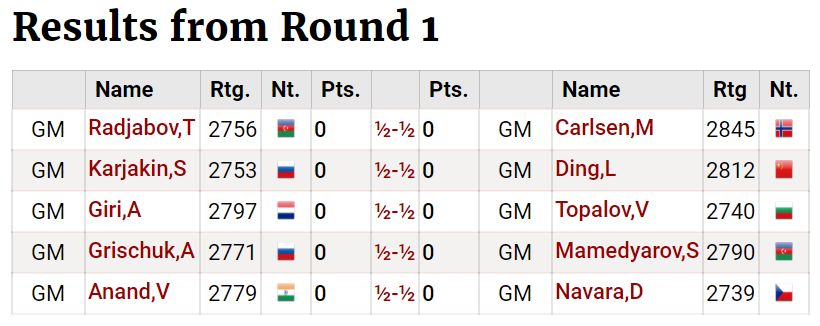
The first round did prove to be a bummer as far as results were concerned, but the games themselves were of rich quality and complex in nature. The computer naively shows that Black was doing fine along in most games, but as I took a deeper look, I noticed that White had made the second player suffer a little. It was a round full of fighting chess, and I hope to see more of this in the upcoming rounds. Well, let’s start with the games then, shall we?
Anand - Navara
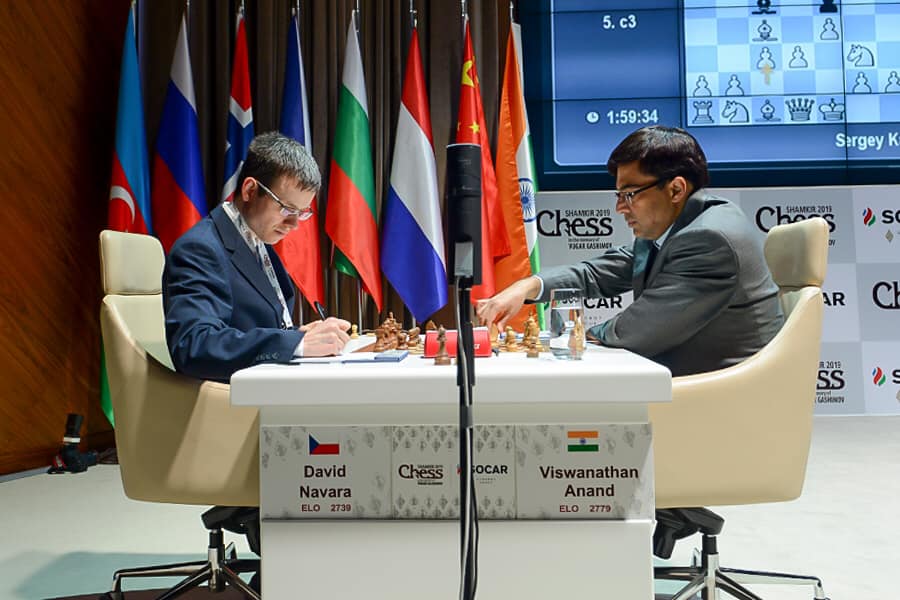
It was clear from the start that both players were here to fight, and what a fight we all got.
Anand vs Navara, Round 1
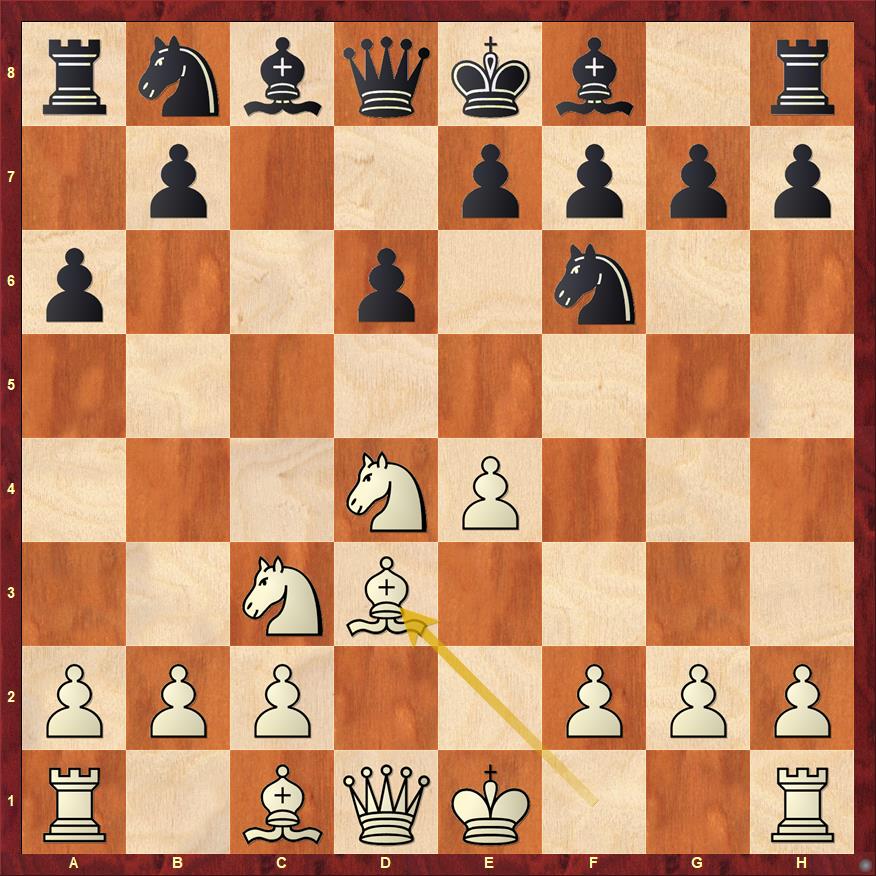
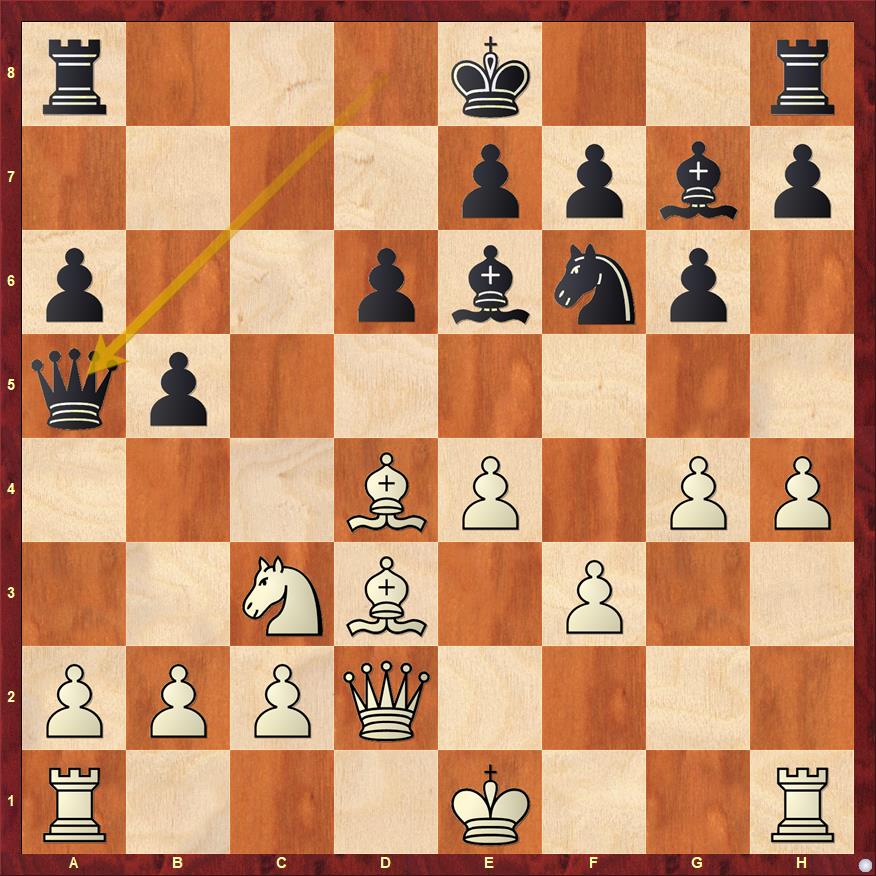
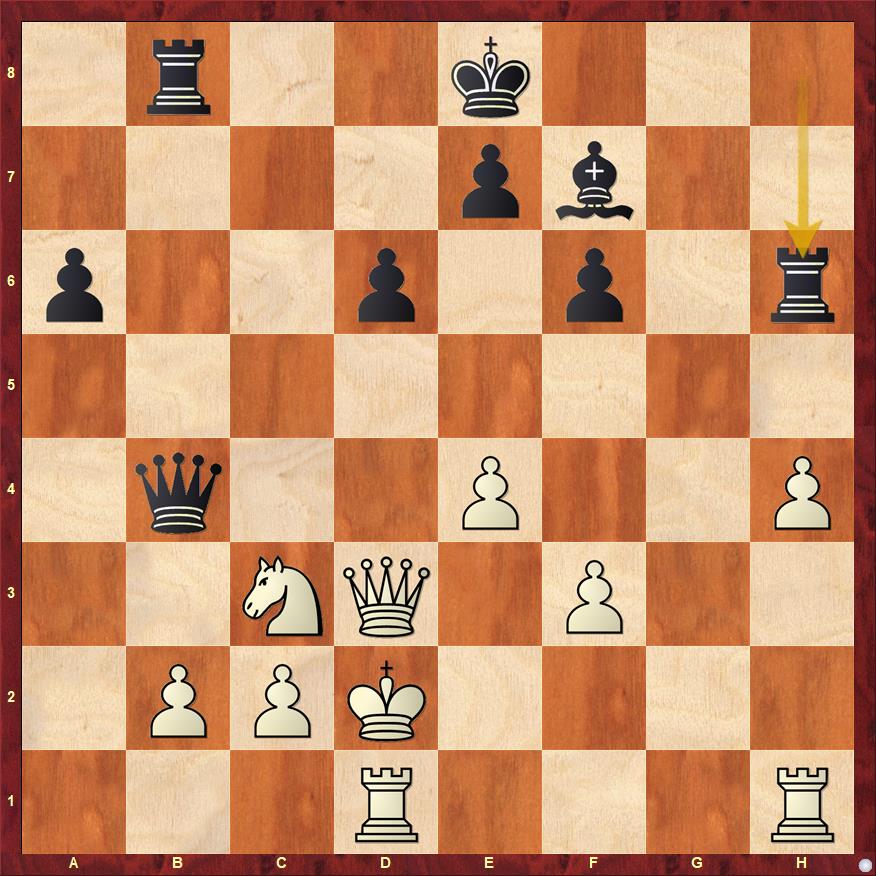
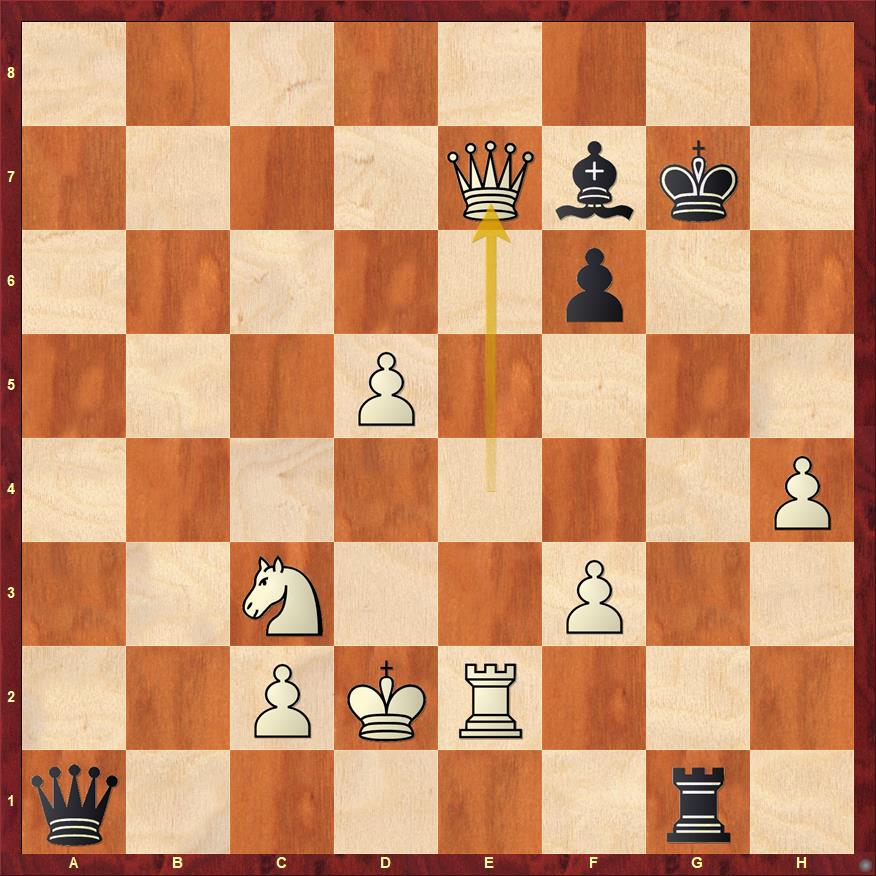
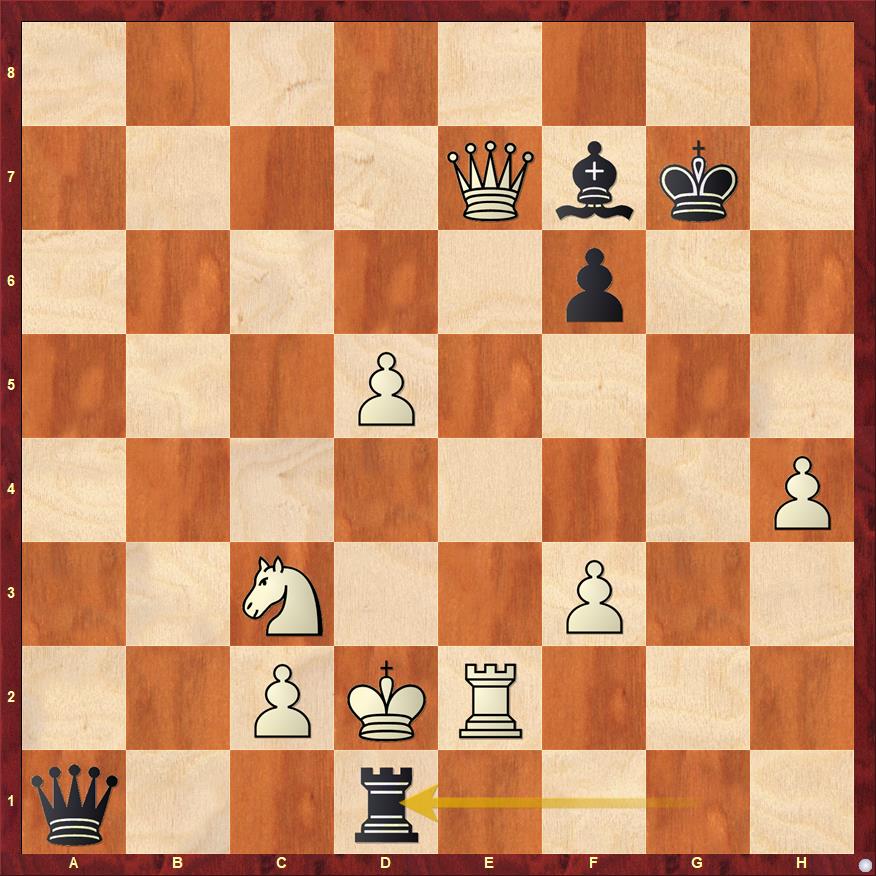
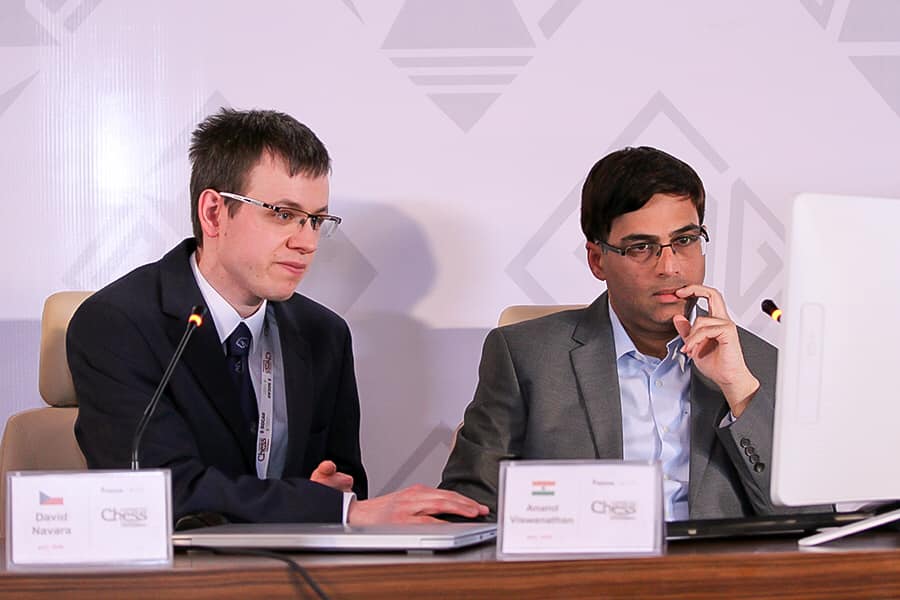

Karjakin vs Ding Liren
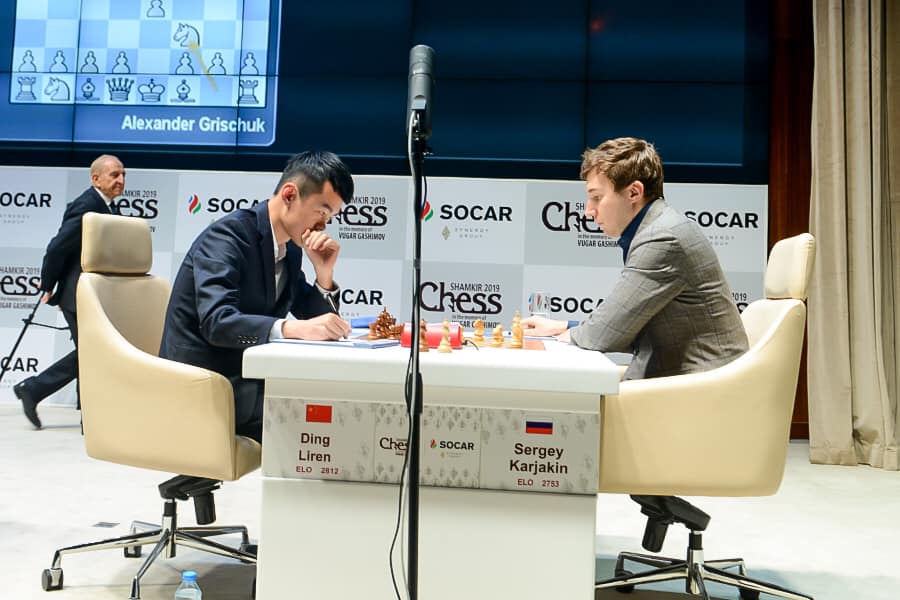
The shortest game of the round was Karjakin-Ding. The game started with the typical Quiet Italian, the new Ruy Lopez of top level chess, having recently taken over the mantle of the most critical try for an opening advantage. Ding pursued a plan involving an early h6 and g5, an aggressive setup for black, and one where White can lose the way surprisingly fast, as shown by Topalov- So, 2016, where Veselin was crushed in great fashion on the kingside. Karjakin however, was well prepared, and managed to generate play in the center with d4 and dxe5, thus distracting Ding from his kingside onslaught. The critical moment was reached just before the 20th move of the game.
Karjakin vs Ding Liren, Round 1
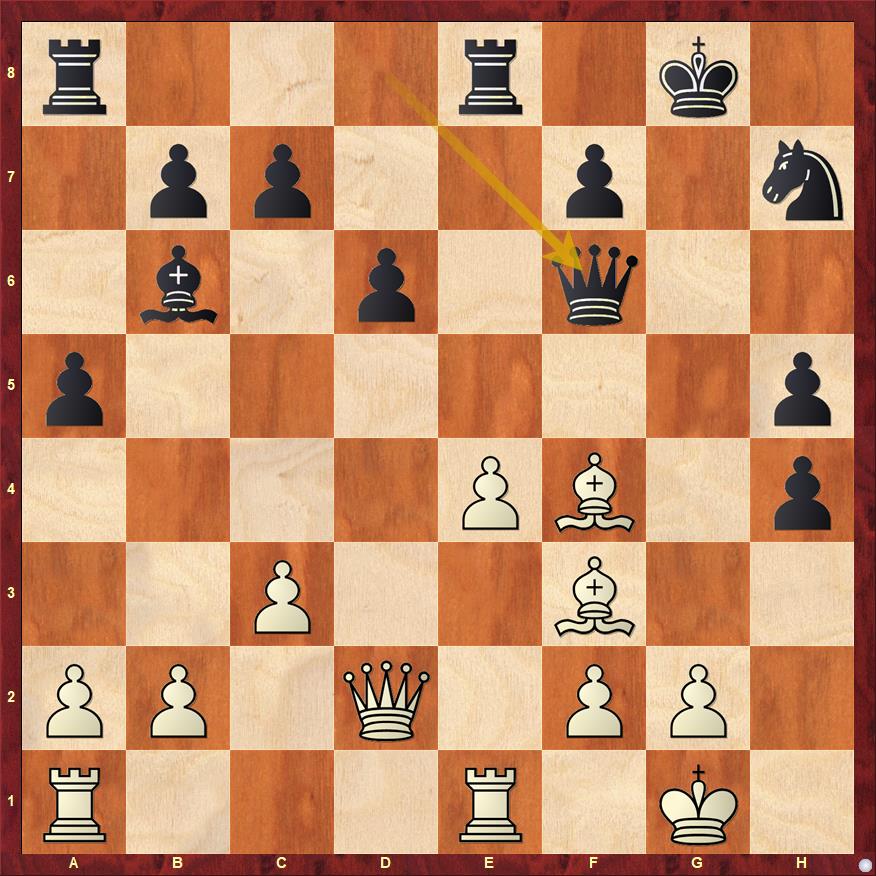
Karjakin here could have simply continued playing on with 20.Re2!, Rae1, and it’s not so clear how Black should equalize. I tend to agree with Stockfish’s evaluation here, that in a practical game, White has every reason to continue – two Bishops, better pawn structure, and a post on d5, supporting a future e5 break. But the Russian GM instead agreed to a tepid draw in 4 more move, after 20. Bxh5?! Qg7!=
Grischuk vs Mamedyarov
I have always respected Alexander Grischuk for his ingenuity in opening preparation, such as 1.c4 e5 2.d3!?. Today, he showed some of the same, reviving an Anti Berlin Line against where Black apparently has sufficient resources to equalize. There was an interesting moment as early as move 11 of the game.
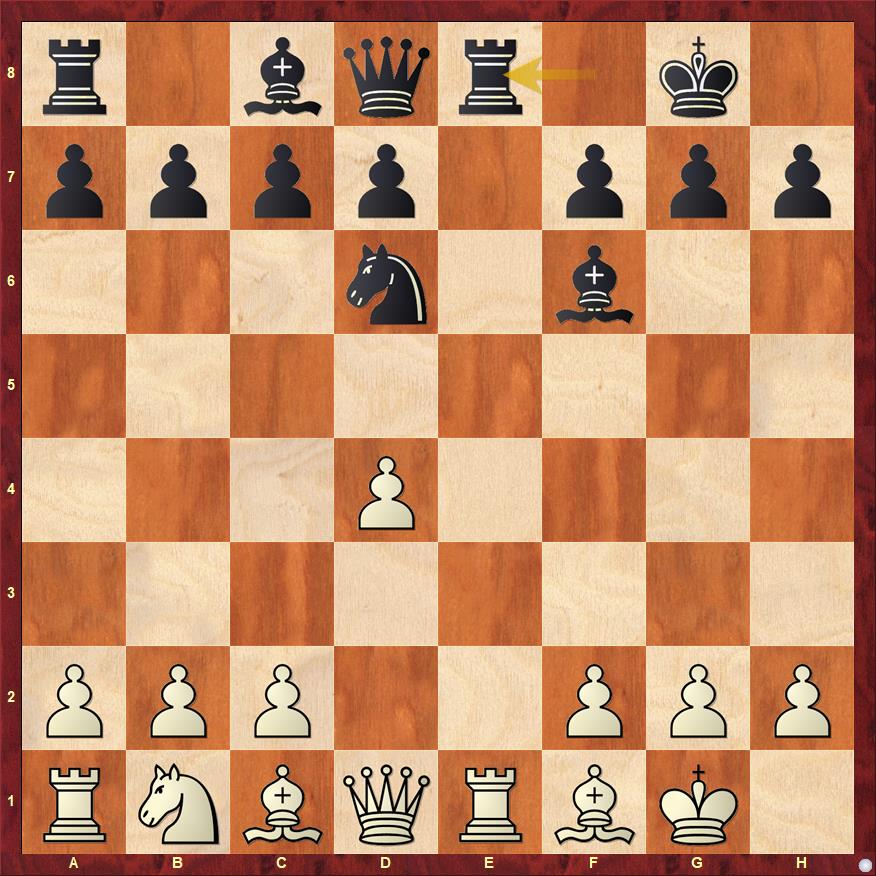
This is a well known position in the 5. Re1 Anti Berlin, excellently covered by Shirov in his Chessbase DVD. Here, Shirov and the rest of the grandmasters seem to feel that the only way to an advantage here is by 11. Bf4 (also played by Grischuk in the game), first introduced by Kamsky.
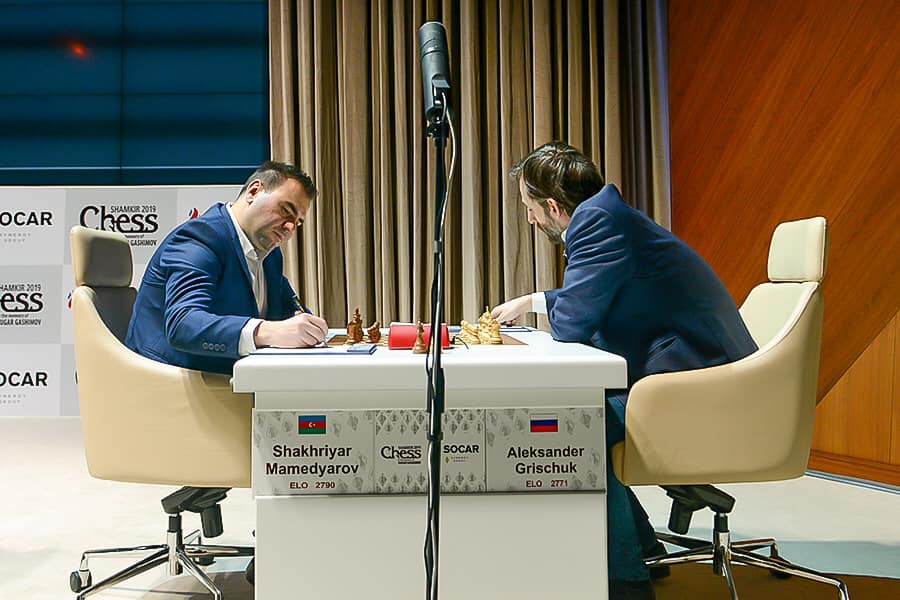
I would like to discuss the opening phase with you and suggest you a new idea instead of the usual 11.Bf4.
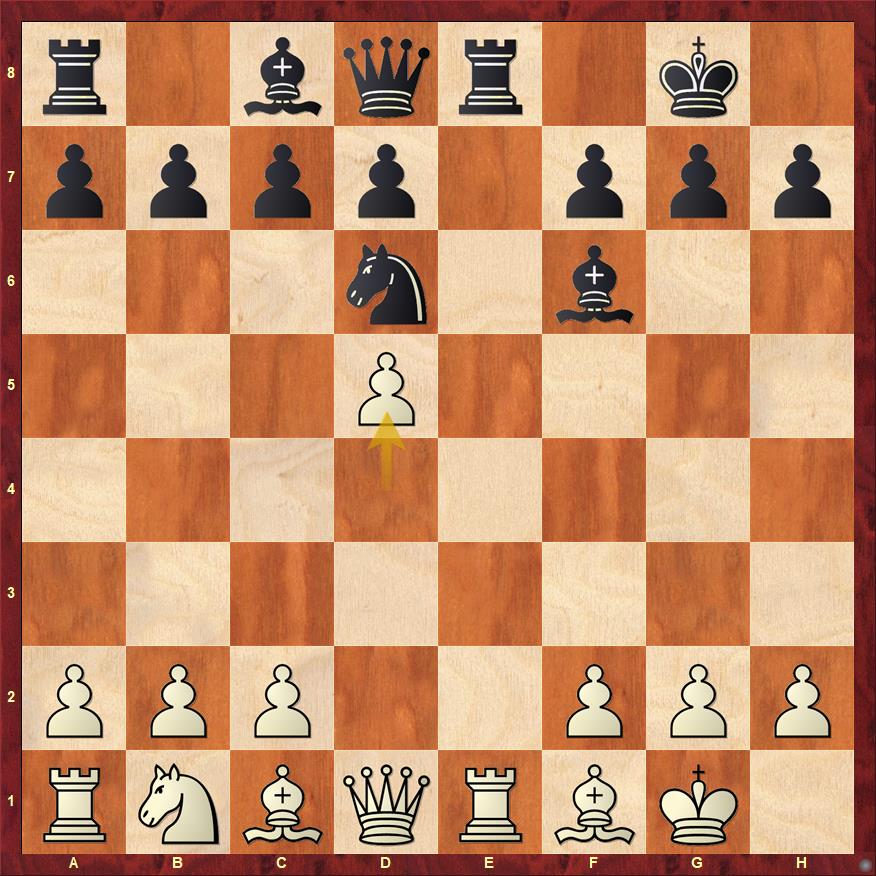
11.d5!?, a move that is universally condemned by engines initially, isn’t without poison. Let me illustrate. If Black decides to try and exchange everything here, then White doesn’t have to be so co-operative here, For example, after 11. d5!? Rxe1 12. Qxe1 b6 13. Nc3 Qe8 14. Be3(!) Bb7 15. Qd2 we reach the following position
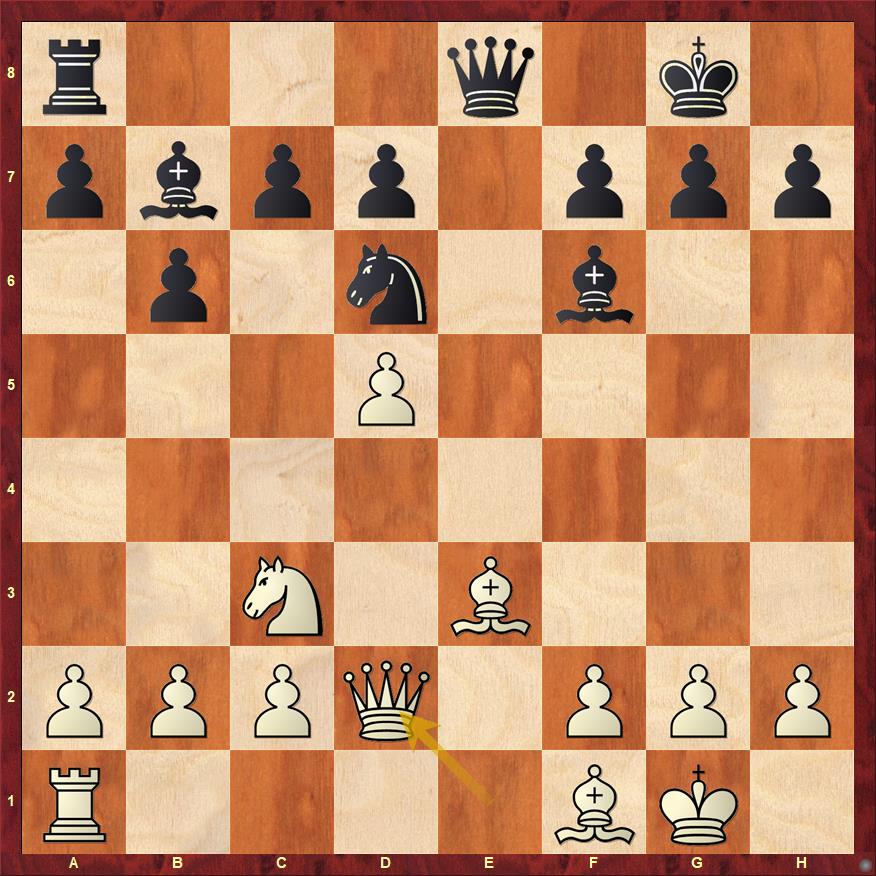
Stockfish unflinchingly suggests a 0.17 something, meaning that Black is more or less equal. However, we all know better, as Alpha Zero has shown recently, that 0.00 doesn’t denote sterile equality. This is a similar case. I quite like White’s position here – more space and better development. Sure, it’s close to equality, but Black has to be really precise to get there. Let me show another example of the same.
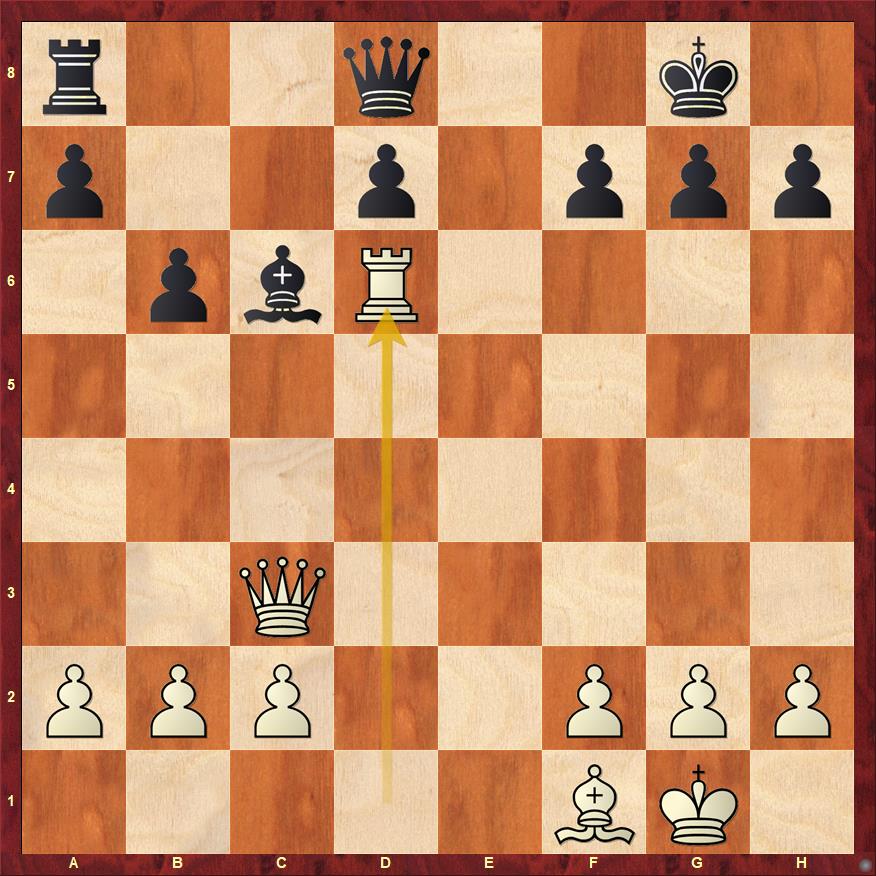
If Black decides to get greedy with taking the d5 pawn, by 11.d5!? Rxe1 12. Qxe1 b6 13. Nc3 Bb7 14. Bf4 Bxc3 15. Qxc3 Bxd5 16. Rd1! Bc6 17. Bxd6 cxd6 18. Rxd6 we reach this position. White has the better pawn structure and some pressure on the IQP. If he manages to exchange bishops, Black will suffer for a long time here.
If you too would like to find a way to fight with the white pieces against the Berlin, then you should definitely think about getting Shirov's DVD
Radjabov vs Carlsen
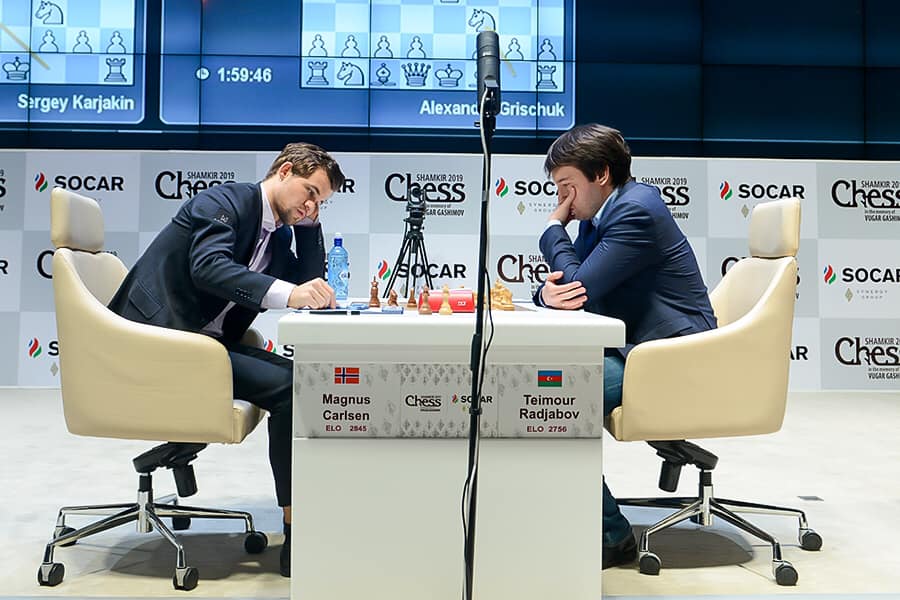
Radjabov-Carlsen was another quiet Italian that did make quite a bit of noise today. After a novelty on move 8(!), the World Champion made some principled decisions and quickly opened the f-file to generate play there. He followed this up by advancing in the center to try and push back White there. The problem was, that Magnus being Black simply didn’t have so much liberty to do as he pleased. Rajdabov reacted correctly by quickly giving back the bishop pair to damage Magnus’ queenside structure. For a long time, White was pressing, but Magnus defended doggedly and a draw was agreed after the time control. There was an interesting moment reached just before move 30.
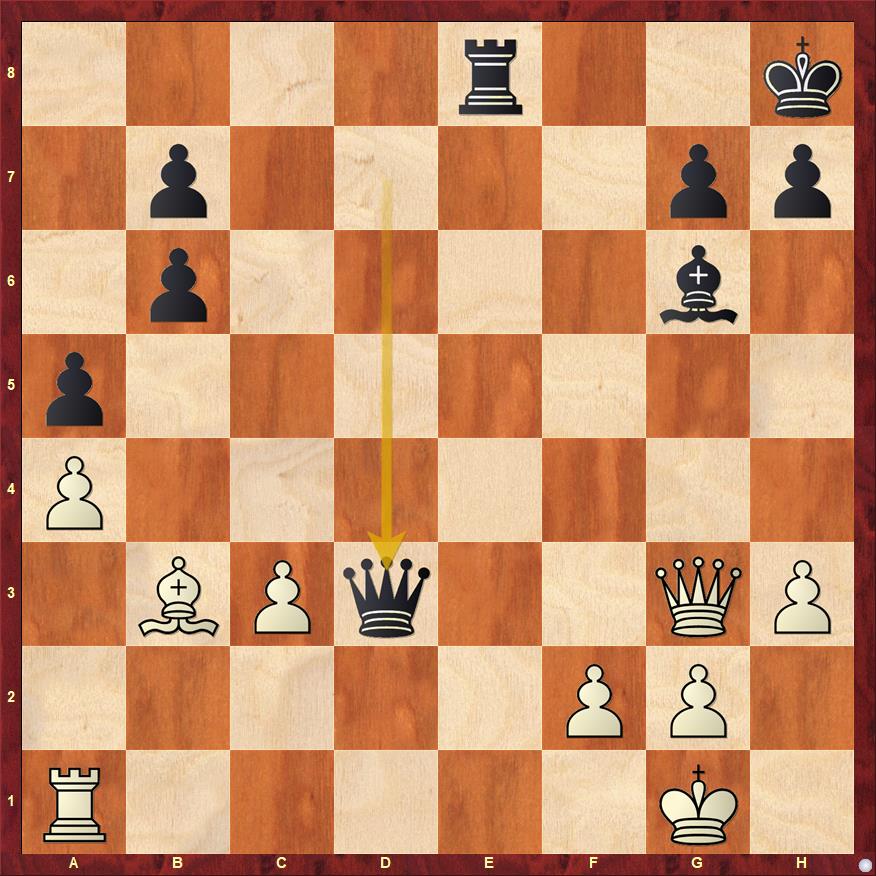
White could have kept up the pressure here with 30.Qc7!, winning a pawn and retaining chances to win the weak b6 pawn. While accurate defence can ensure the draw here for Black, Magnus will be tortured for a long time here, just like how He would torture others here if he were White!

Giri vs Topalov

Giri – Topalov was another 4.d3 Anti Berlin, where Anish ventured into 5. Bxc6. After opposite sides castling, a complex strategic battle ensued, with White having most of the fun in the position. After 33 moves the game reached the climax.
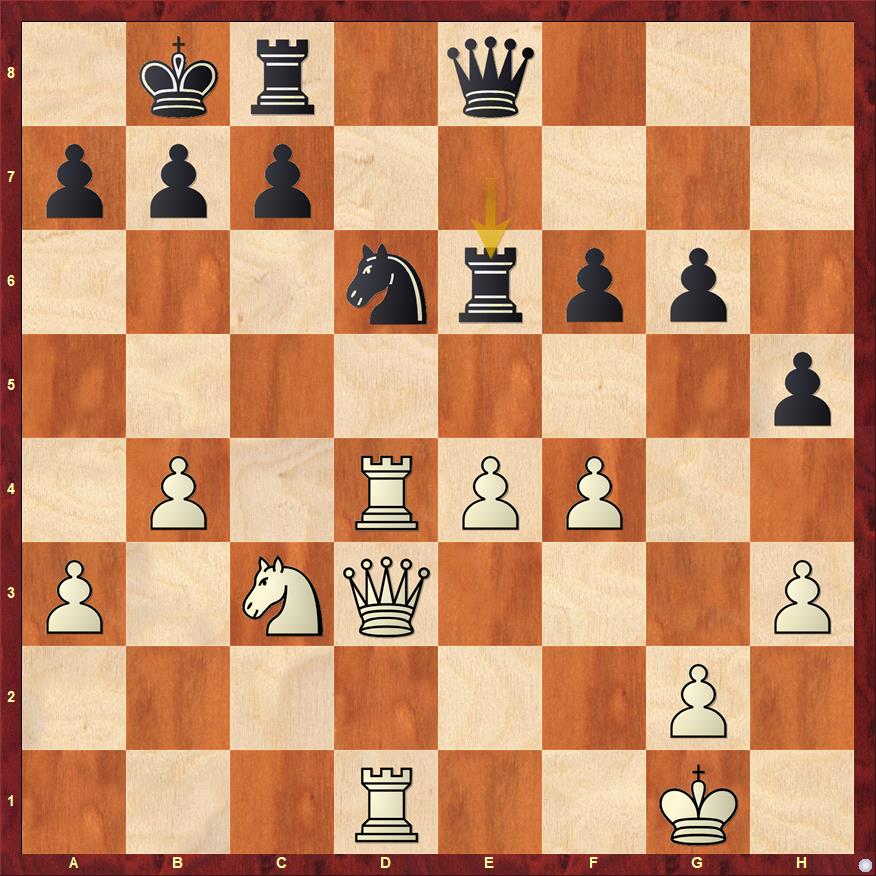
Anish erroneously ventured 34. b5?! Here, and after a future b6! Topalov had avoided the worst, and a draw was inevitable. Instead, the far more natural 34. a4! would have put immense pressure on Black’s position. White can slowly build up on the queenside and keep the kingside in check, due to his immense space advantage.

About the author:
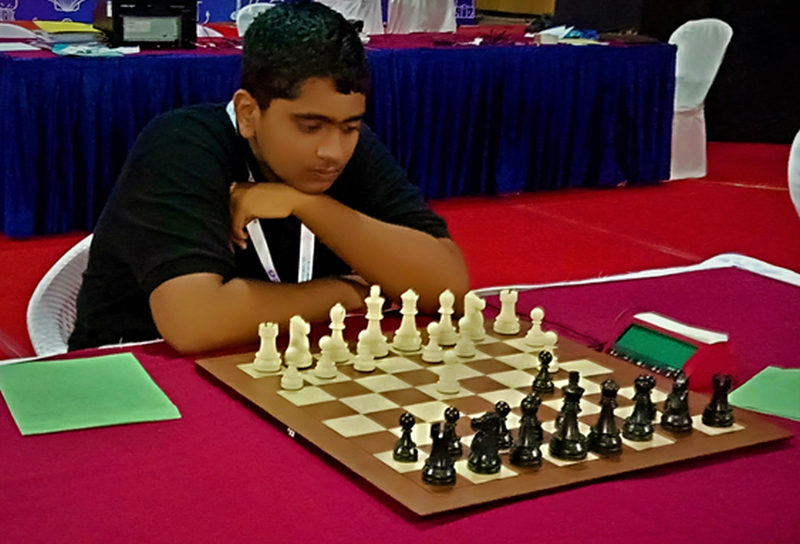
Tanmay Srinath is an 18-year-old chess player from Bangalore, Karnataka, currently pursuing both chess and engineering at BMSCE Bangalore. Tanmay is also a Taekwondo Black Belt, who has represented the country in an International Tournament in Thailand. He is a big fan of Mikhail Tal and Vishy Anand, and sincerely believes in doing his bit to Power Chess in India!












